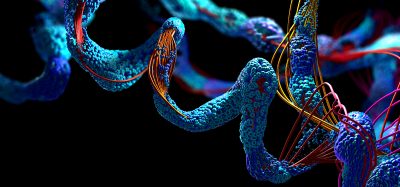A structural insight into HIV drug-resistance mechanisms
Posted: 24 July 2023 | Izzy Wood (Drug Target Review) | No comments yet
New Salk Institute, US, research could lead to the development of new HIV therapeutics that overcome resistance to existing drugs.


Salk Institute researchers, in collaboration with the National Institutes of Health, US, have discovered the molecular mechanisms by which the human immunodeficiency virus (HIV) becomes resistant to Dolutegravir, one of the most effective, clinically used antiviral drugs for treating HIV.
The new study, published in Science Advances, reveals how changes to the 3D structures of integrase, an HIV protein, can lead to Dolutegravir resistance and how other compounds may be able to overcome this resistance.
“With HIV, one must think two steps ahead of the virus,” said Salk Associate Professor Dmitry Lyumkis, co-senior author and the Hearst Foundation Developmental Chair. “We have now determined how the virus could continue evolving against drugs like Dolutegravir, which is important to consider for the development of future therapeutics.”
HIV infection depends on the ability of the virus to paste its own genetic material into the genomes of human cells, essentially hijacking the cells to become virus-producing factories. Dolutegravir and related drugs work by blocking integrase, a protein critical to the ability of the virus to integrate its own DNA into the host genome. Without functioning integrase, HIV can’t effectively infect human cells. However, HIV is a rapidly mutating virus, and an increasing number of HIV strains are resistant to Dolutegravir.
In the past, Lyumkis’ lab discovered the 3D structure of the integrase protein while attached to DNA as well as exactly how drugs like Dolutegravir bind to and block integrase. But researchers weren’t sure how the integrase structure changed when the virus stopped responding to Dolutegravir.
Lyumkis and collaborators from the National Institutes of Health created versions of the integrase protein with mutations known to make HIV resistant to Dolutegravir. Then they determined the structure of each mutant integrase, revealing why Dolutegravir could no longer bind to and block each version of the protein. The scientists also evaluated the “fitness” of the virus (its capacity to produce infectious descendants) and the activity of the enzyme to better understand what leads to drug resistance in patients.
“We were quite surprised by the magnitude of resistance that these integrase variants had,” added Lyumkis. “The ability of Dolutegravir to function was completely compromised.”
The researchers also tested the efficacy of an experimental HIV drug, 4d, to block the function of Dolutegravir-resistant integrase proteins. 4d was developed by Lyumkis’ collaborators at the NIH as a next-generation integrase-targeting drug and is currently in preclinical animal trials. In all the variants, they discovered that 4d still potently blocked the ability of HIV to integrate its genes into human cells. This suggests that 4d or variants of this compound may be effectively used to treat the virus in patients who have developed resistance to Dolutegravir.
The structural data on how 4d binds to the Dolutegravir-resistant integrase proteins also hinted at how new drugs could overcome drug resistance.
“4d is really just an example of how to combat drug resistance, but it provides us with some basic principles that we can learn from to design other therapeutics,” says co-senior author Robert Craigie of the National Institute of Diabetes and Digestive and Kidney Diseases (NIDDK).
“The way a section of the 4d molecule stacks like a flat sheet on top of a section of the integrase protein-DNA assembly could be replicated in other compounds.”
Next, the scientists will study how integrase variants evolve—including those not yet seen in patients but possible in the future, and how they impact response to the best clinically used drugs as well as the ability of HIV to infect humans.
Related topics
3D printing, Disease Research, DNA, Protein, Proteogenomics, Structural Biology
Related conditions
HIV
Related organisations
National Institute of Diabetes and Digestive and Kidney Diseases (NIDDK), National Institutes of Health, Salk Institute
Related people
Associate Professor Dmitry Lyumkis, Robert Craigie








